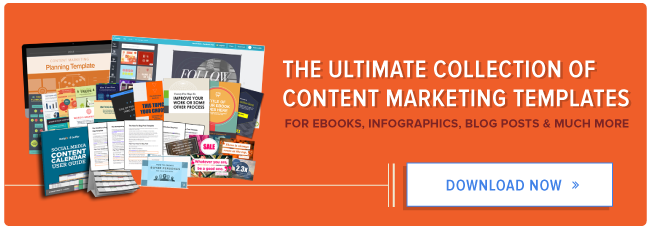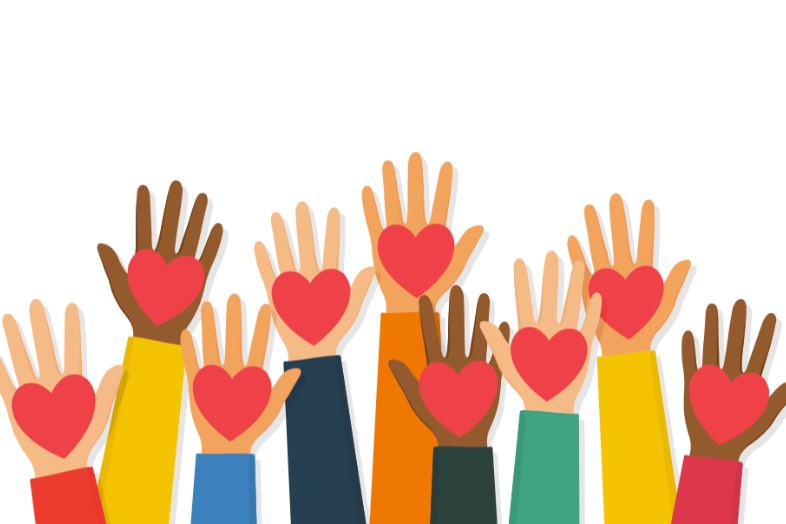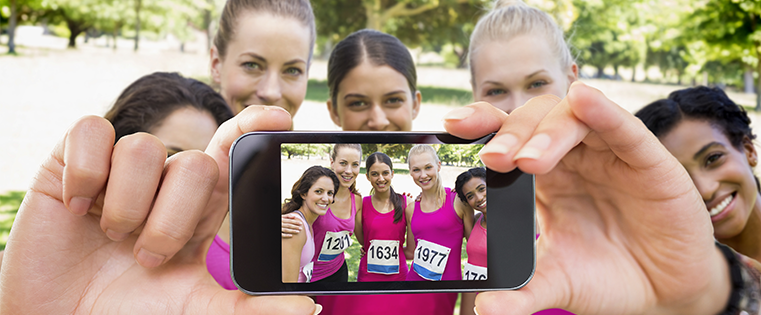

If you haven’t experienced the pure joy of a buy one, get one free sale, you’re missing out. You go into a store looking for the perfect pair of jeans, and you come out with twice as much denim as you paid for!
Matching gifts are almost exactly like those sales. While matching gifts won’t bring your organization twice as many designer denim pants, you can double the amount of donations that you’re already receiving by effectively marketing matching gifts to your donors during the giving process.
What Are Matching Gifts?
Matching gifts are contributions that employers, or other parent companies, make to eligible nonprofits after an employee has made a donation on their own accord. They can be a great way to give your nonprofit’s fundraising a boost with little effort on you or the donor’s part.
While there are many ways to market matching gifts to your donors, one of the best ways is to capture their attention with matching gift information during the donation process or in tangent to other donation promotions. Donors who are already giving to your organization (or at least considering it) obviously care about your cause. Use that opportunity to convey how matching gifts can help donors maximize their impact.
Here are four of the top ways to market matching gifts in the donation process
1) Market Matching Gifts in Solicitation Emails
Solicitation emails are one of the most common ways to encourage donors to give to your organization, and can also play a crucial role in your matching gift marketing strategy.
When you let donors know about matching gifts upfront in your solicitation emails, you are giving them an even more exciting reason to donate to your organization, because their impact will be much greater than an individual contribution alone.
However, you shouldn’t send out the same solicitation email to every single donor. Personalization can go a long ways to make email recipients feel valued, which in turn can even further increase the likelihood of a donation.
You can use prospect research to determine which of your donors should be getting which message. Prospect research can help you identify regular givers as well as relatively new contributors. With this information, you can better tailor your solicitation emails to different donors.
You can use the following tools for prospect research:
- Information gleaned from form submissions during previous conversions on your websites (for example, a webinar or content offer)
- The Foundation Center (they have nearly 1,000 filings for nonprofits)
- The Chronicle of Philanthropy
- Guidestar
- And many more resources
This research can help guide you when it comes to donor communications as they relate to matching gifts for different donor groups. To begin with, the message should be different for regular donors versus first-time givers. For matching gifts in particular, you may be able to use more complex messaging for donors who have given in the past, and are already familiar with your cause.
Goodwill of Southwestern Pennsylvania offers a great example of an email that is tailored to a regular donor. The second paragraph states, “As a valued donor of Goodwill of Southwestern Pennsylvania, you know that your gift supports more than 50 programs and services … We encourage you to take advantage of the matching gift program.” The email also incorporates an eye-catching CTA and useful links that lead donors to more information.
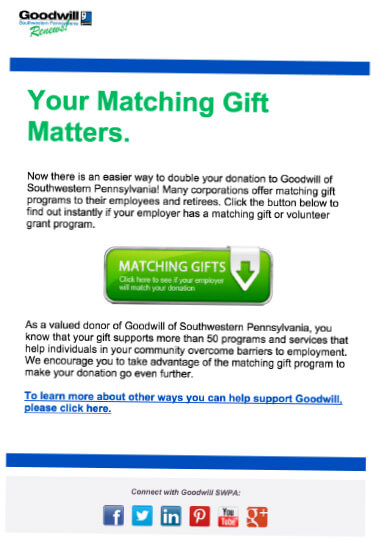
By sending out this type of email to regular donors, your nonprofit can reap the benefits of matching gift programs and receive twice as many donations from your donors and their employers.
2) Market Matching Gifts on Donation Forms
Just like you need to provide different donors with unique solicitation emails, you’ll want to make sure that your donors are receiving distinct donation experiences on your forms as well.
If you know that a donor has submitted a matching gift request before, then you’ll want to reflect that on your website. Additionally, if a donor is either donating to your organization for the first-time, or if they’ve donated before but have never submitted a matching gift request, you’ll need to treat their donation experience differently than a regular donor who has their gifts matched.
For instance, when a regular donor makes another donation, remind them of their past matched contribution on the thank you page. The reminder can help encourage donors to have their donations matched again without discounting their past efforts.
Provide first-time donors or givers who haven’t had their donations matched in the past with information on the donation form so they can immediately look into having their contribution matched.
The Girl Scouts of Greater Atlanta provide donors with a way to check if their donation to the annual fund can be doubled right on the donation page. The space above the donation levels section is used for matching gift information, while the link helps donors find out if their company will even match their donation.
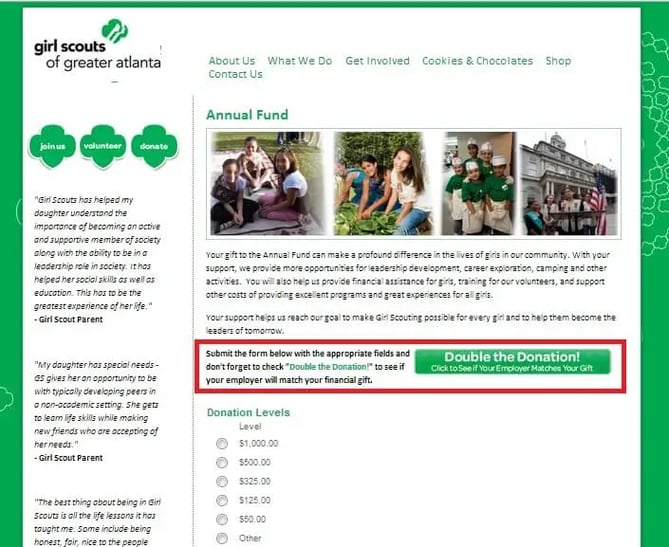
By providing donors with different experiences during the donation process, you can more efficiently inform or remind donors about the power of matching gifts.
3) Market Matching Gifts With Smart Content
When donors visit your website, they want to feel welcomed. One of the ways to ensure that users stay on your site and eventually come back, donate, and submit matching gift requests is to personalize the experience that they receive through the use of smart content.
When donors read blog posts and other articles on your website, add calls-to-action that are suited for each user—based on their previous online actions.
Instead of offering the same promotion to everyone, customize your donors’ experience depending on:
- The type of device they’re using
- The geographic area they are visiting your site from
- How they reached your website (social, search, email)
- Their previous donations or downloads
- Their company or parent organization
Additionally, customize users’ experiences depending on where they are in the lifecycle stage. For instance, the message that first-time visitors to your site receive should be different from the content that regular users encounter.
When it comes to matching gifts, this step is crucial. You don’t want to beat regular donors over the head when they have already had several of their donations matched. However, if a first-time donor or a contributor who has never had their donation matched visits your site, you’ll want to make sure that you’re covering your bases.
4) Market matching gifts in acknowledgement emails
You should always be thanking donors after they make a donation. But acknowledgement emails can also be a great way to let donors know about making their donations go a little further.
Most companies have deadlines for submitting matching gift paperwork. While some deadlines are at the end of a calendar year, some are as short as 3 months from when the donation is made. Sending an email to a donor shortly after they make a contribution can help you capture more matching gift requests.
However, you shouldn’t be sending the same thank-you email to all of your donors. Customizing and segmenting donors according to the size of their contribution, the frequency at which they donate, and whether they’ve previously submitted matching gifts is crucial to achieving matching gift success.
The Hereditary Neuropathy Foundation’s thank-you email highlights the importance of matching gift programs while letting donors know that they appreciate their contributions. They even thank donors in advance for checking to see if their employers offer a matching gift program!
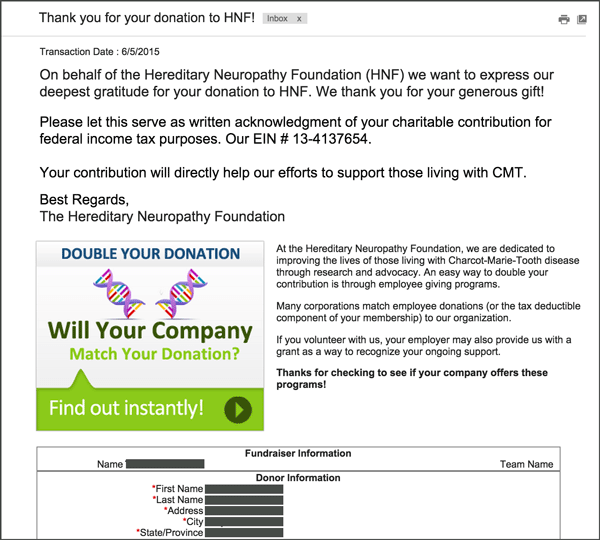
While the HNF’s thank-you email could be used for first-time donors who have never submitted a matching gift request before, it wouldn’t be the best fit for donors who regularly submit matching gifts. For those donors, consider sending a thank-you email once their employers submit the matching donation.
NC State lets donors know when their employers’ matching gift donations are received and thanks them for taking the extra time to submit a matching gift request. An email like this can be a great way to continually remind donors that their donations can be matched throughout the year.
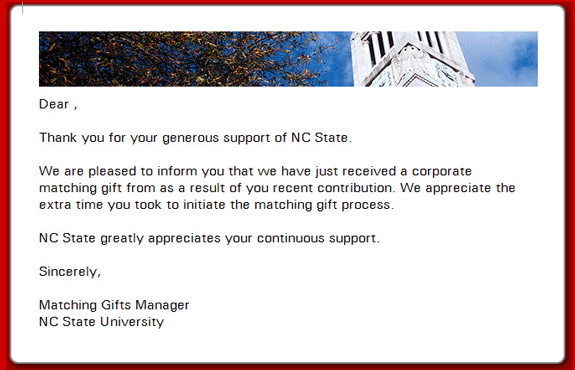
Getting Started With Matching Gifts
Marketing matching gifts to donors should take place across your website and communications, but it should also occur within the donation process. Whether a donor is a first-time contributor or has regularly donated and had their gifts matched, you can tailor the steps of the donation process to fit each donor’s needs.
And then based on the responses from your donors and website visitors to your different content and communications you can tailor your messaging to everything from additional contributions to skills-based volunteering opportunites, to additional ways to get involved with your nonprofit. Just like the matcheddonations, you're sure to see your marketing efforts compound on themselves over time.
